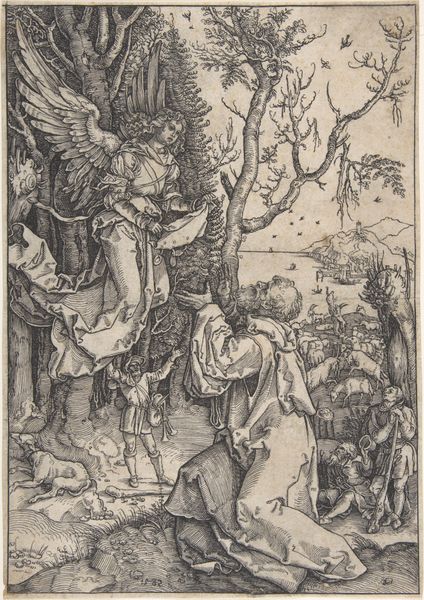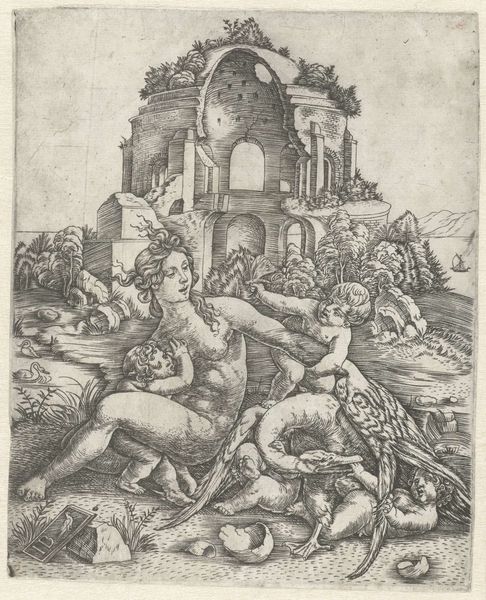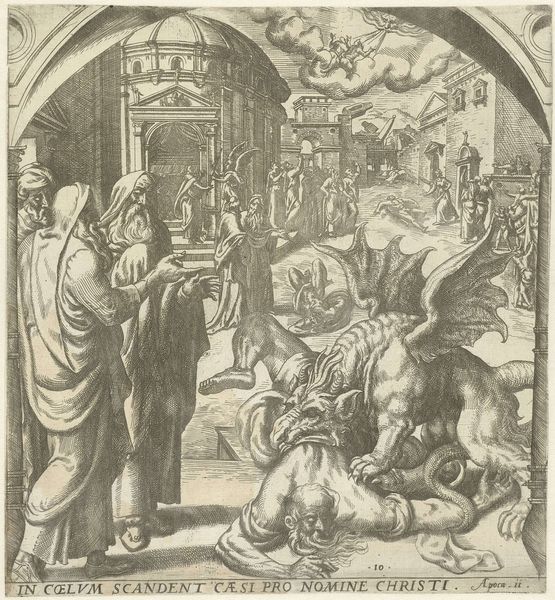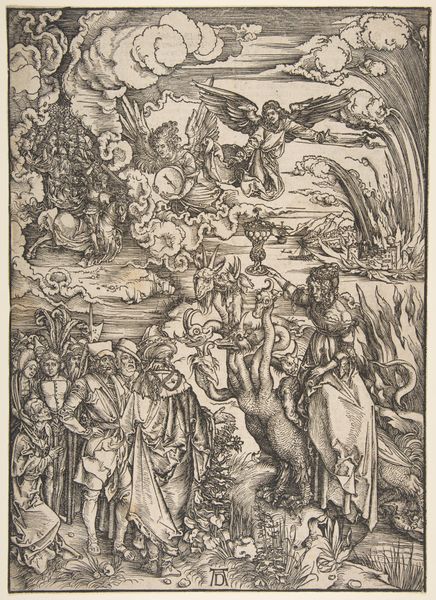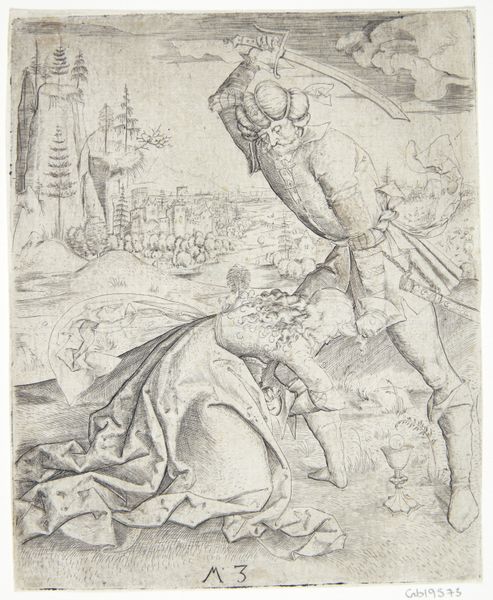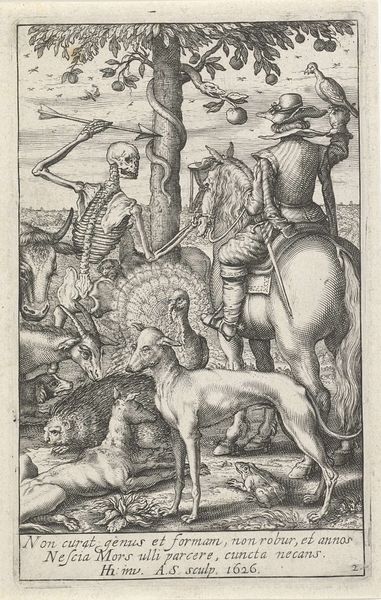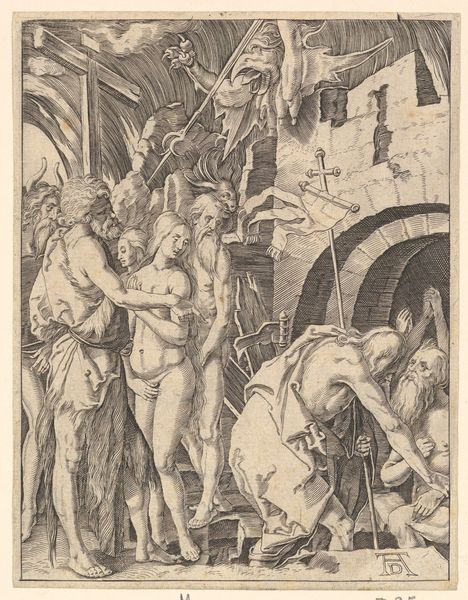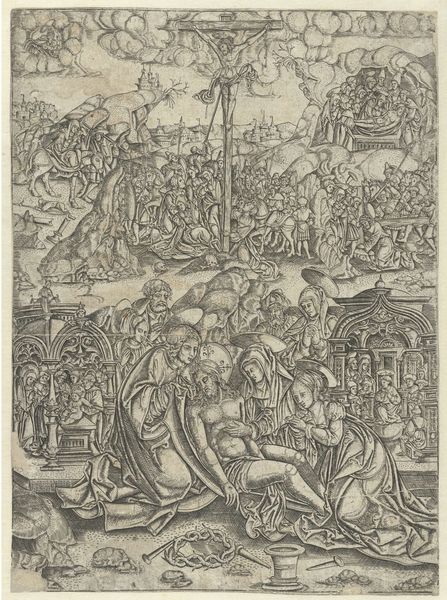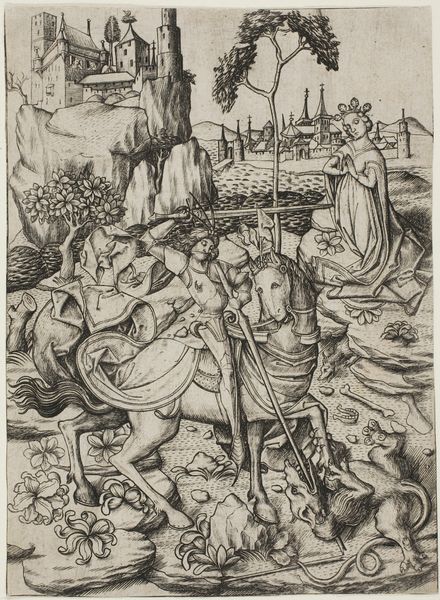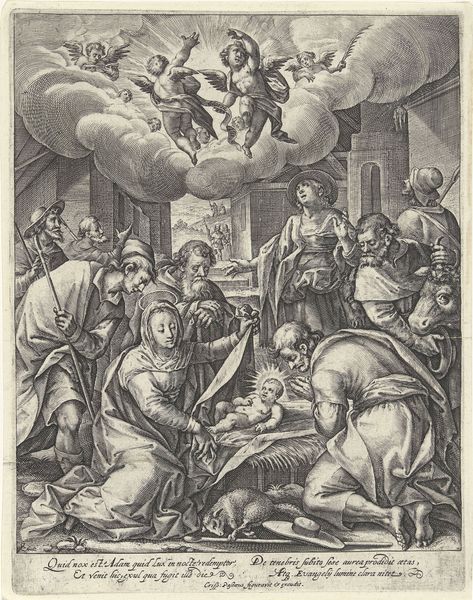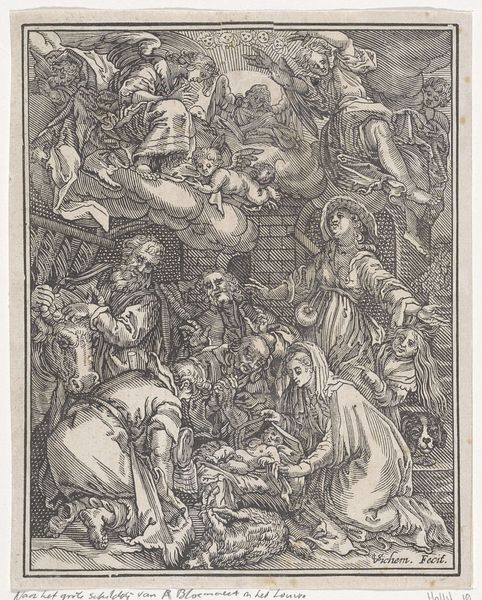
drawing, tempera, ink, engraving
#
drawing
#
medieval
#
tempera
#
figuration
#
form
#
ink
#
line
#
history-painting
#
engraving
Dimensions: height 141 mm, width 114 mm
Copyright: Rijks Museum: Open Domain
Curator: This engraving, "Saint George on Foot," was created by the Master of the Amsterdam Cabinet between 1488 and 1492. The scene is rendered in ink and tempera. What stands out to you first? Editor: The intensity of the lines. They create a sense of movement but also constraint, as if the very materiality of the printmaking is holding the scene together, almost pinning it down. And the dragon looks a bit… well, pathetic, not really scary. Curator: It's interesting you say that. Saint George slaying the dragon is a potent symbol in many cultures, representing the triumph of good over evil. The composition places George in the active role, of course, defending the princess whose town was terrorized by the beast. Editor: Exactly! This wasn’t about George proving himself, he was performing public service! The artist used pretty fine lines to show every piece of his armour and weaponry… It is all about skilled labour, which brings us to consumption, too. This was definitely designed for an elite, maybe even princely, patron. Curator: Certainly, such imagery played a role in reinforcing societal norms, presenting a clear narrative of heroism for a particular audience, one eager to display lineage through heraldry or family crests displayed alongside such emblems. Editor: Still, I find it interesting how the artist focuses more on the texture of the beast and armour, than making a bold statement about who should yield the power, politically. His Saint George isn’t larger-than-life but the care and technique devoted to production is the real power! Curator: I agree that its power lies more in its display of artistry than any revolutionary idea it might promote. Looking at the fine hatching used to suggest shadow and form, and how he used it, reminds you that art production itself reflected and shaped societal values in many ways. Editor: Indeed. And it makes me wonder about the printmaker's own relationship to the material and labor involved, the societal forces shaping his perspective as a craftsman. The act of creation really brings the whole narrative to life here.
Comments
No comments
Be the first to comment and join the conversation on the ultimate creative platform.
